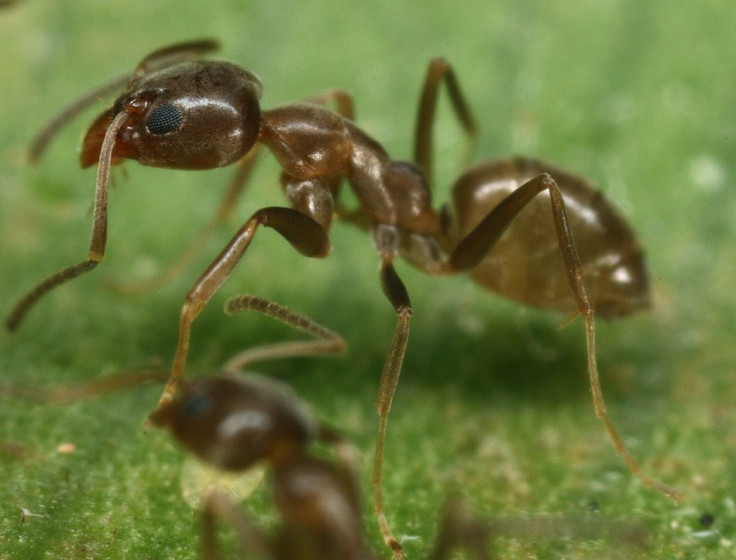Asians Invade America: Deadly Needle Ants on the March Across US
Biologists warn Asian needle ant's bite can kill humans as invasive species spreads across US and drives out other invasive populations

Venomous Asian ants have invaded the US and brought war to another non-indigenous species, biologists have discovered.
Researchers at the North Carolina State University said the Asian needle ant was driving out the invasive Argentine ant from areas across the US.
The Asian ant is poisonous to humans and can cause anaphylactic shock, a severe reaction that can result in death.
Lead author of the research, Eleanor Spicer Rice, said the Asian ants could be the next major invasive ant species of the US. That would be bad news for humans and native ant populations alike.
She began following the Asian invasion in 2008 after noticing that the species had occupied the same areas as Argentine ants. Argentine ants normally do not tolerate foreign species.
Argentine ants are a hugely successful invasive species, having developed populations across the world. They are thought to have entered the US in the late 1800s.
Their success lies in their aggressive, territorial behaviour, and the ability to create huge super-colonies with thousands of queens and millions of workers.
However, Spicer Rice said they ignore Asian needle ants, and the Asian ants took advantage of that to displace large populations of the Argentinian species over four years.
Asian ants colonies have been established in areas ranging from Alabama to New York to Oregon.

"This is the first time we've seen another ant species take territory from Argentine ants," Spicer Rice said.
In 2008, Argentine ants had populations in 99 percent of the sites in the study area, while the Asian ants had just 9 percent.
Three years later, Argentinian needle ants had colonies in just 67 per cent of the areas studied and Asian ants had increased their presence to 32 percent.
The two species shared an environment in 15 percent of the sites studied.
Researchers believe the Asian ants are able to push out the Argentinian populations because they begin breeding earlier due to their ability to tolerate cooler temperatures.
Both species become dormant at around the same time but the Asian ants begin reproducing and building new nests around March, while the Argentine ants start in late April or May. "The Asian needle ants essentially get a headstart," Spicer Rice said.
"The Asian needle ant is moving into forests and urban environments at the same time. And because it is active at cooler temperatures, it could move into a very broad range of territory."
The Asian invasion could spell disaster for local ecosystems, as they are driving out native species that spread seeds. Thier bites also cause allergic reactions in humans who come into contact with them."
Jules Silverman, co-author of the study, said: "If the Asian needle ant is effective at displacing a dominant species - and it is - then it could be the next major invasive ant species."
© Copyright IBTimes 2025. All rights reserved.






















